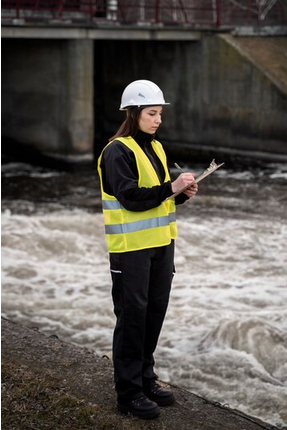Introduction
Flooding represents a significant natural hazard globally, causing extensive damage to property, infrastructure, and human lives. Understanding the factors that contribute to flood risk and developing accurate predictive models are crucial for effective disaster management and mitigation strategies. This paper delves into the science behind flood risk, examining the various factors involved and the predictive models used to assess and forecast flood events.
Factors Contributing to Flood Risk
Flood risk is influenced by a complex interplay of natural and human factors. Understanding these factors is essential for assessing and managing flood risk effectively.
1. Climatic Factors
1.1 Precipitation Patterns
Precipitation patterns, both in terms of intensity and frequency, play a critical role in determining flood risk. Heavy rainfall over a short period can overwhelm drainage systems and cause flash floods, particularly in urban areas with limited permeable surfaces. Climate change has intensified precipitation in many regions, exacerbating flood risks.
1.2 Seasonal Variability
Seasonal variations in precipitation and temperature can significantly influence flood risk. Regions prone to monsoons or seasonal storms experience heightened flood risks during specific periods of the year. Understanding these seasonal patterns is crucial for preparedness and response planning.
2. Geographical Factors
2.1 Topography
The topography of an area plays a vital role in determining flood risk. Low-lying areas, river valleys, and regions with poor drainage are more susceptible to flooding. Topographic maps and elevation data are essential for assessing flood-prone areas and designing flood mitigation measures.
2.2 Proximity to Water Bodies
Areas near rivers, lakes, coasts, and other water bodies face higher flood risks due to their proximity to potential sources of flooding. Riverine flooding, in particular, can be severe in regions with densely populated floodplains.
3. Hydrological Factors
3.1 River Discharge
River discharge, influenced by precipitation, snowmelt, and upstream land use changes, directly affects flood risk. High river discharge levels can lead to riverine flooding, impacting downstream communities and infrastructure.
3.2 Soil Moisture and Saturation
Soil moisture content plays a critical role in determining how much precipitation is absorbed or runs off into rivers and streams. Saturated soils are less able to absorb water, increasing surface runoff and the likelihood of flooding.
4. Human Factors
4.1 Land Use and Urbanization
Land use changes, such as urbanization and deforestation, can alter natural drainage patterns and increase flood risk. Pavement and buildings reduce permeable surfaces, leading to greater runoff during storms. Urban planning strategies that incorporate green infrastructure can mitigate these effects.
4.2 Infrastructure and Flood Control Measures
The design and maintenance of infrastructure, including levees, dams, and drainage systems, influence flood risk. Poorly maintained infrastructure or inadequate flood control measures can exacerbate flooding during extreme weather events.
Predictive Models for Flood Risk Assessment
Predictive models play a crucial role in assessing and forecasting flood risk. These models integrate various data sources and methodologies to provide insights into potential flood scenarios.
1. Hydrological Models
Hydrological models simulate the movement and distribution of water in a watershed or river basin. These models use data on precipitation, evapotranspiration, soil characteristics, and topography to predict river discharge and potential flood events. Examples of hydrological models include the Soil and Water Assessment Tool (SWAT) and the Hydrologic Engineering Center's River Analysis System (HEC-RAS).
2. Hydraulic Models
Hydraulic models focus on the behavior of water within rivers, streams, and urban drainage systems. These models simulate flow dynamics, water levels, and floodplain inundation to assess flood risk and the effectiveness of flood control measures. Hydraulic models range from simple 1D models (one-dimensional flow) to complex 2D and 3D models that account for spatial variations in flow and topography.
3. Statistical and Data-Driven Models
Statistical and data-driven models analyze historical flood data and other relevant variables to identify patterns and trends in flood occurrence. These models use regression analysis, machine learning algorithms, and time-series forecasting techniques to predict future flood events based on past observations and environmental data.
Case Study: Application of Predictive Models
Conclusion
In conclusion, understanding flood risk assessment involves analyzing a complex array of natural and human factors. Climate change, topography, hydrology, land use, and infrastructure all play critical roles in determining flood vulnerability. Predictive models such as hydrological, hydraulic, and statistical models are indispensable tools for assessing flood risk and informing disaster preparedness and mitigation strategies. By integrating scientific knowledge with advanced modeling techniques, stakeholders can make informed decisions to reduce the impact of flooding on communities and ecosystems.





Comments